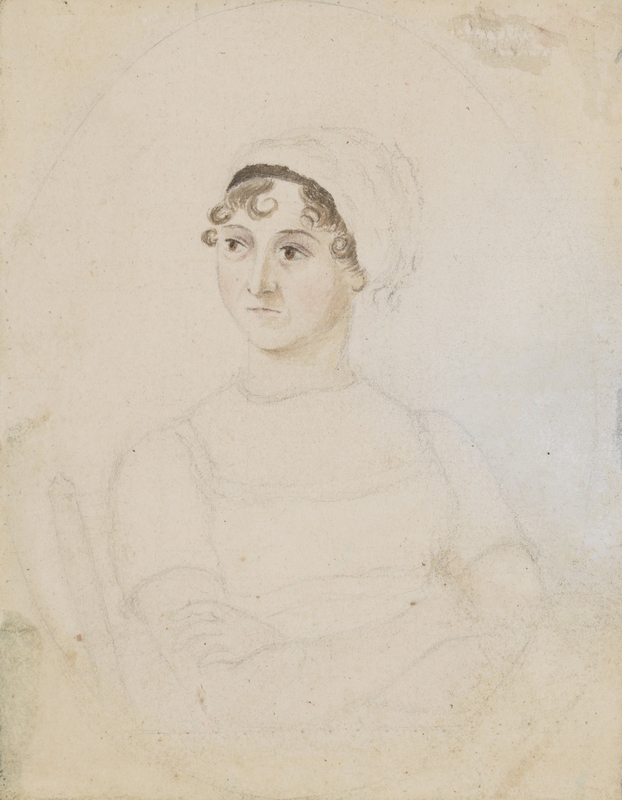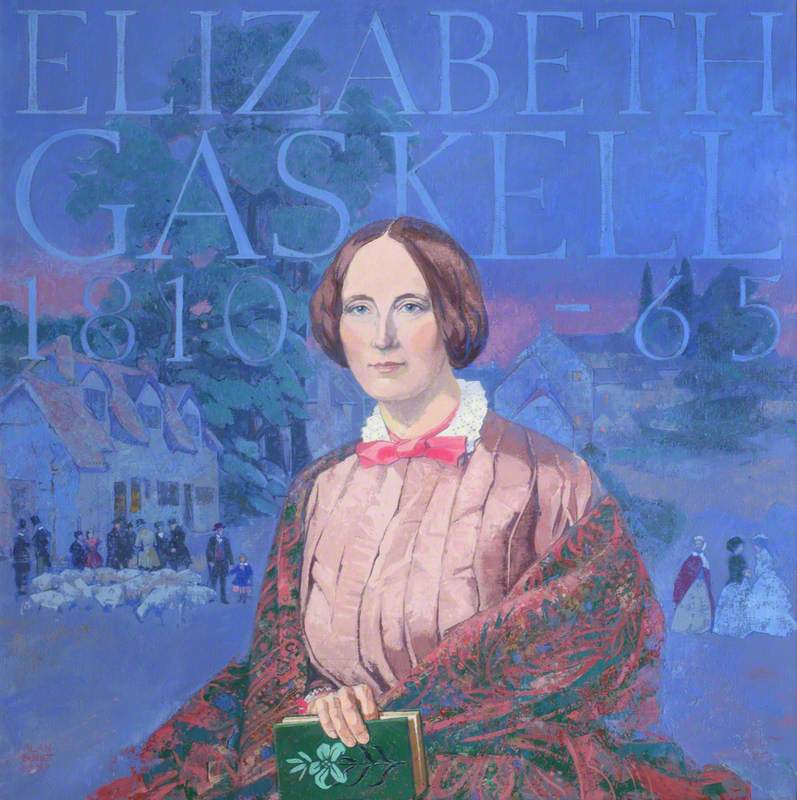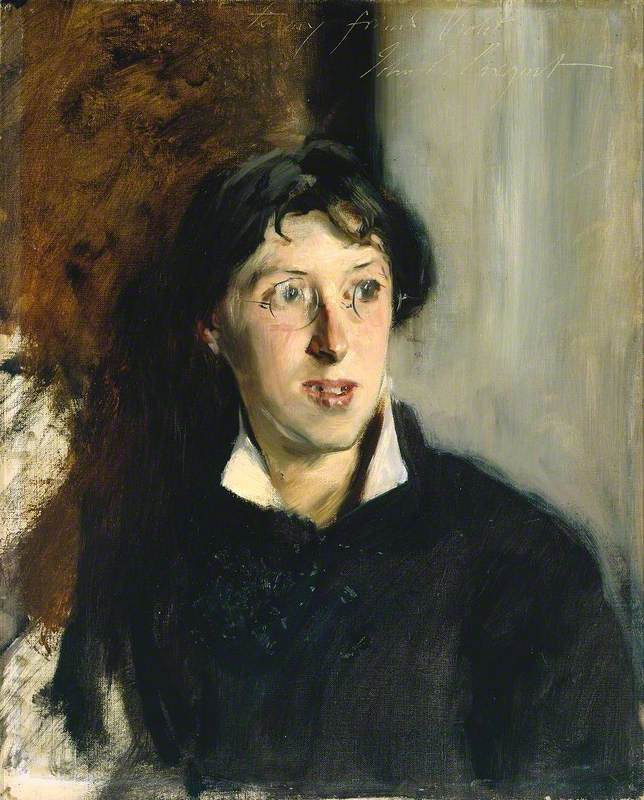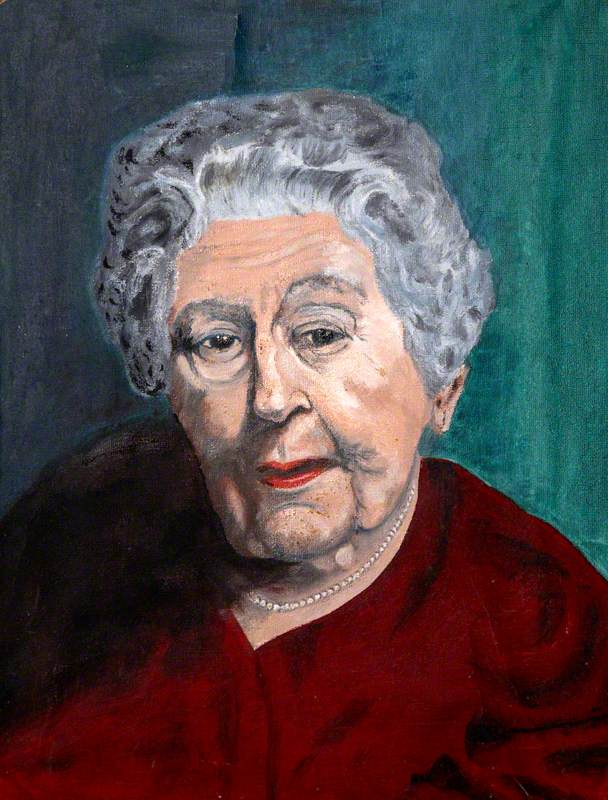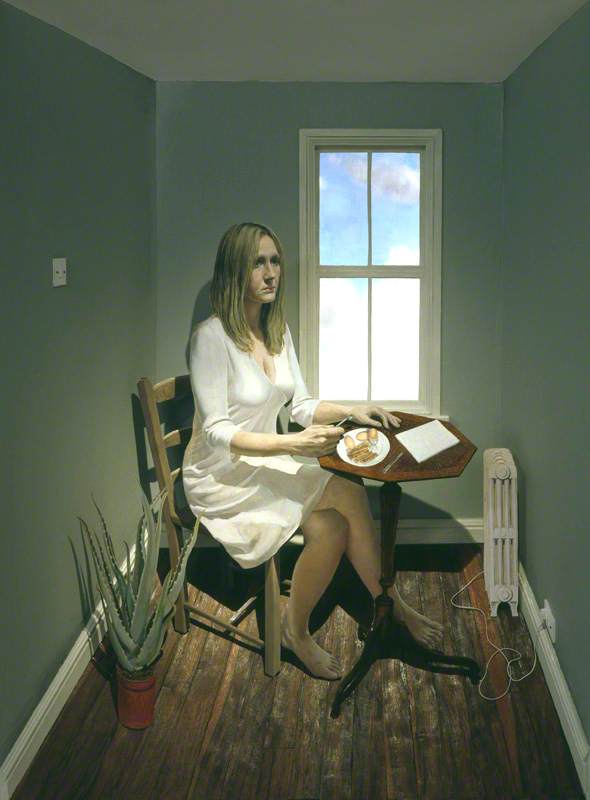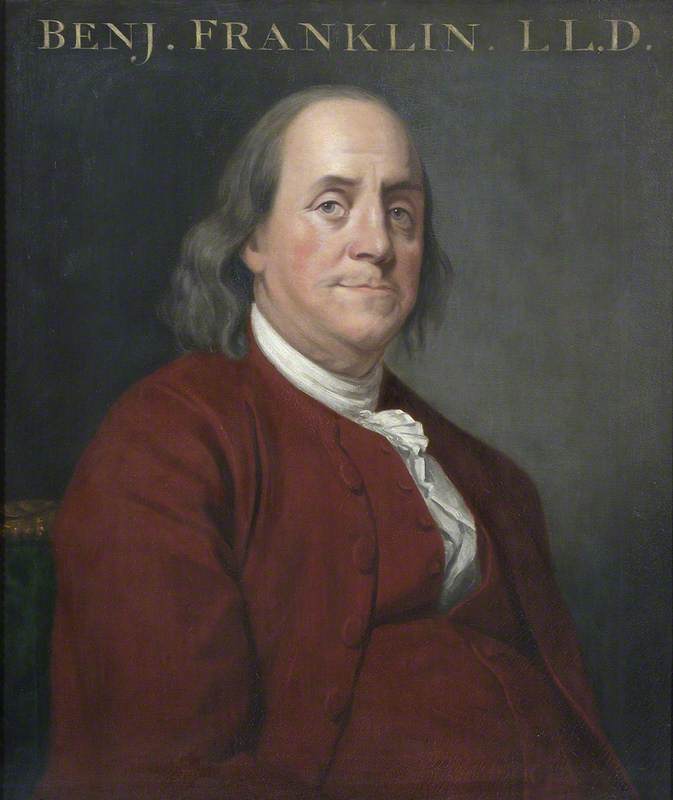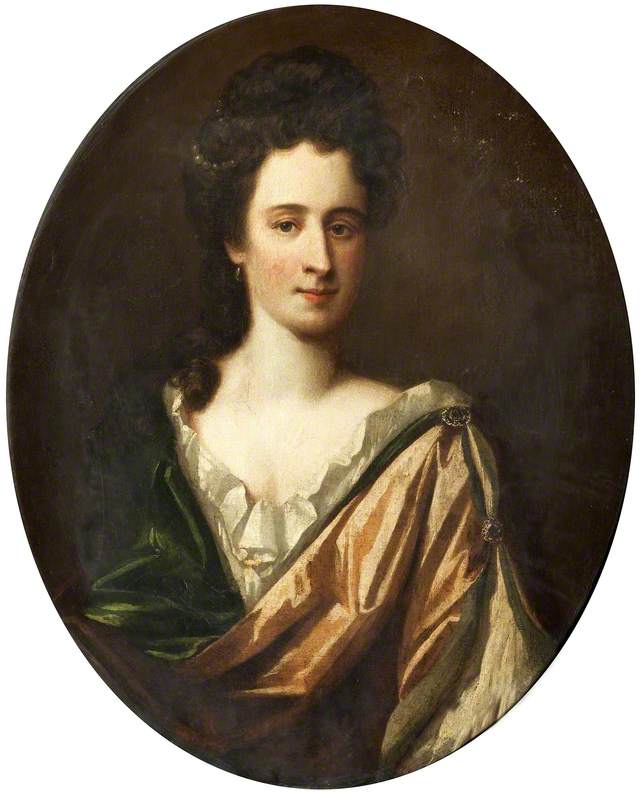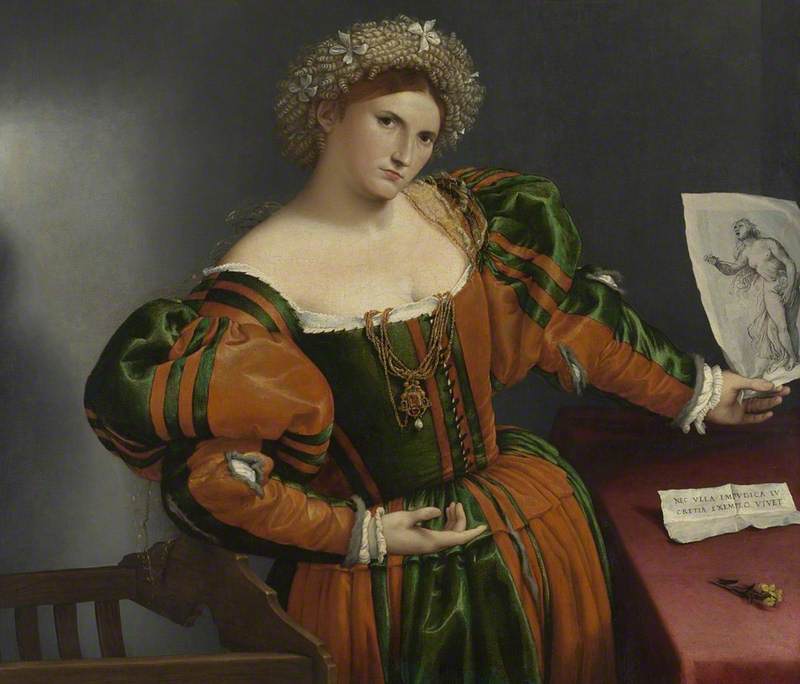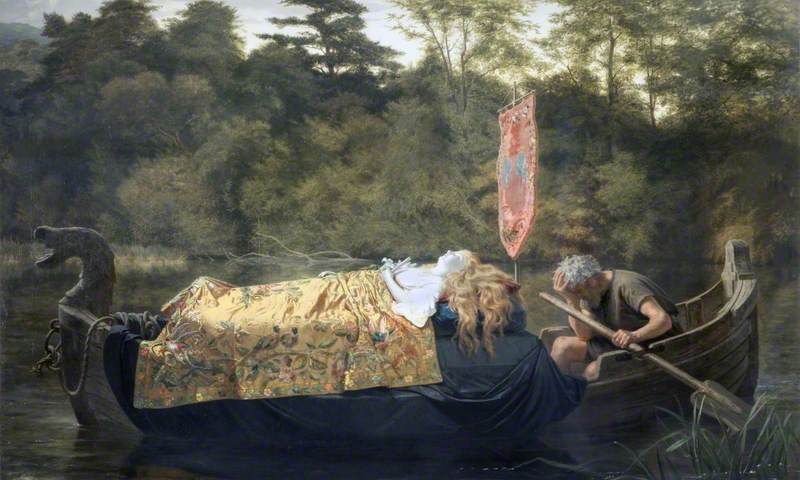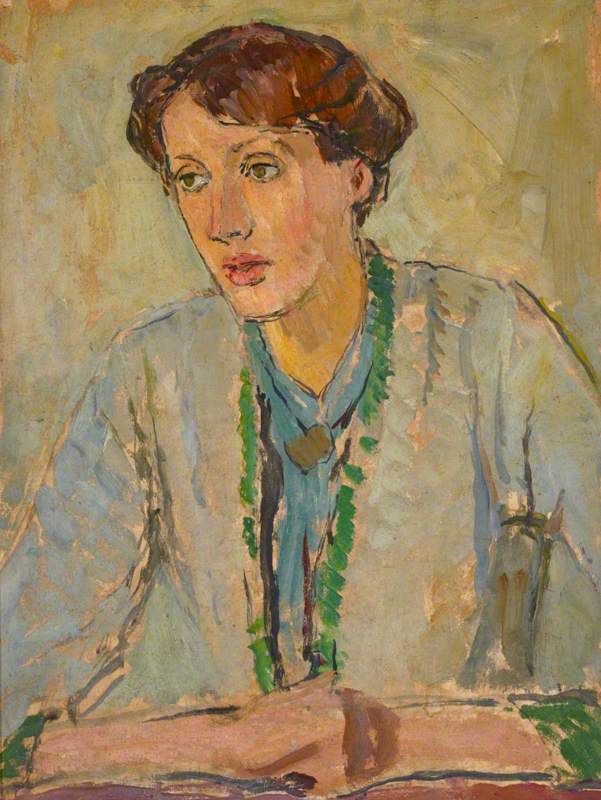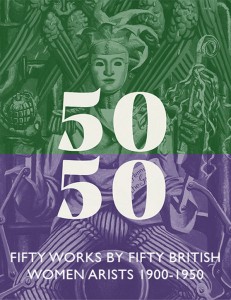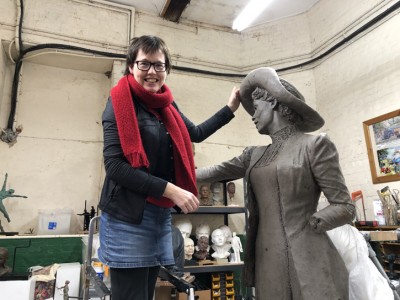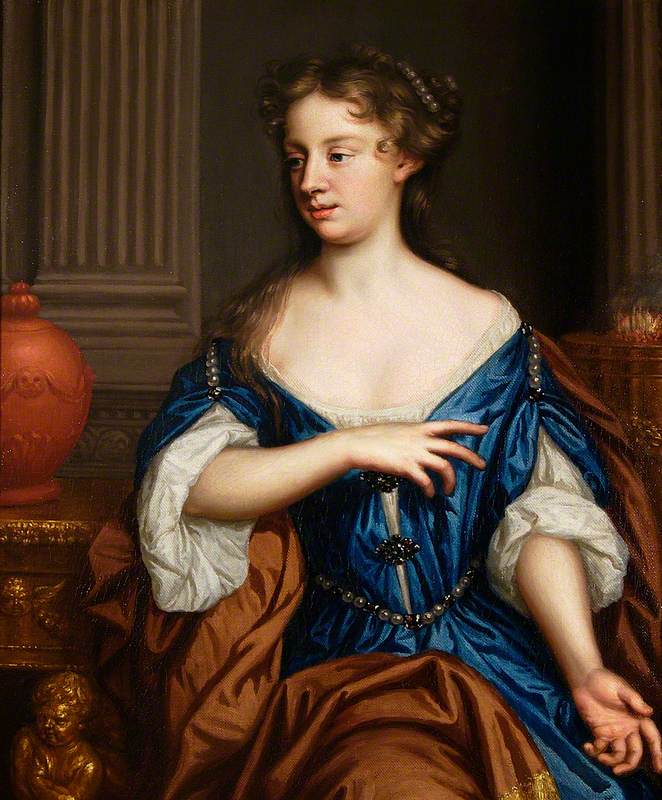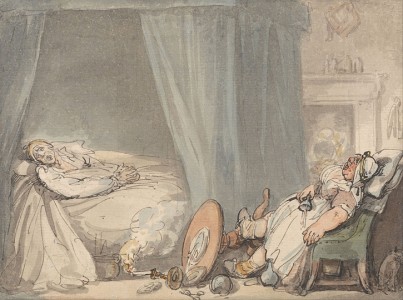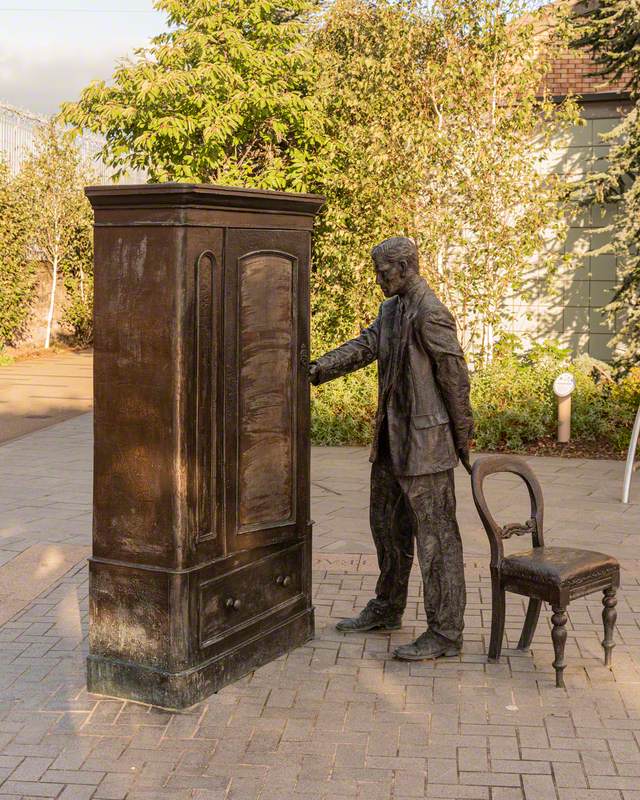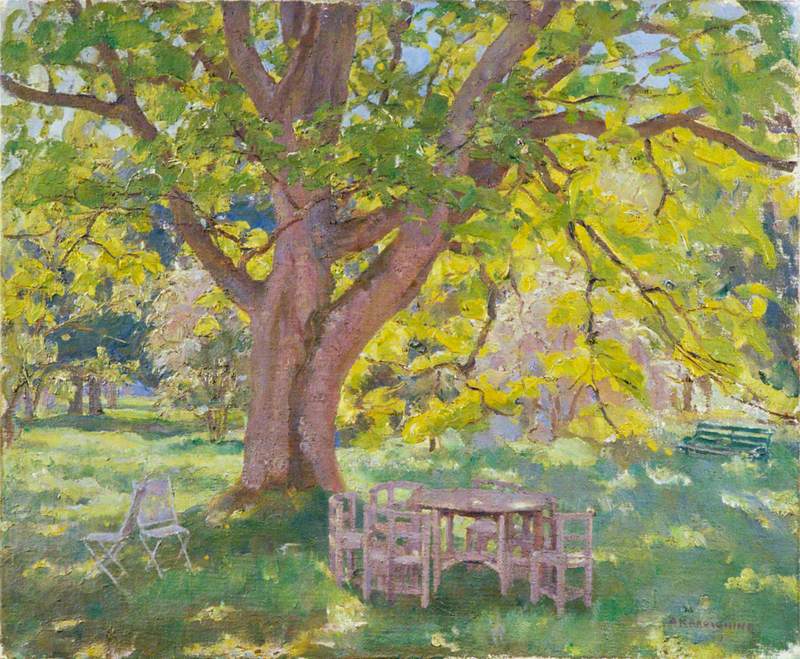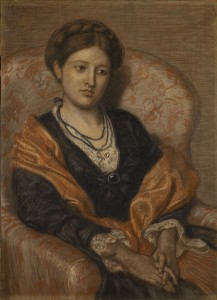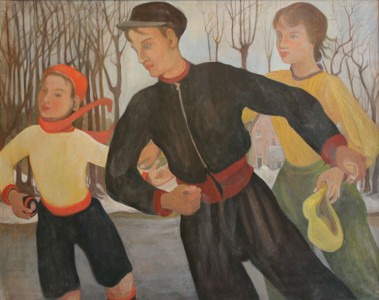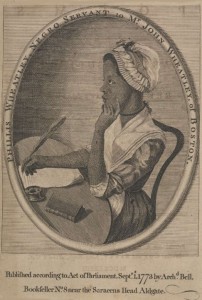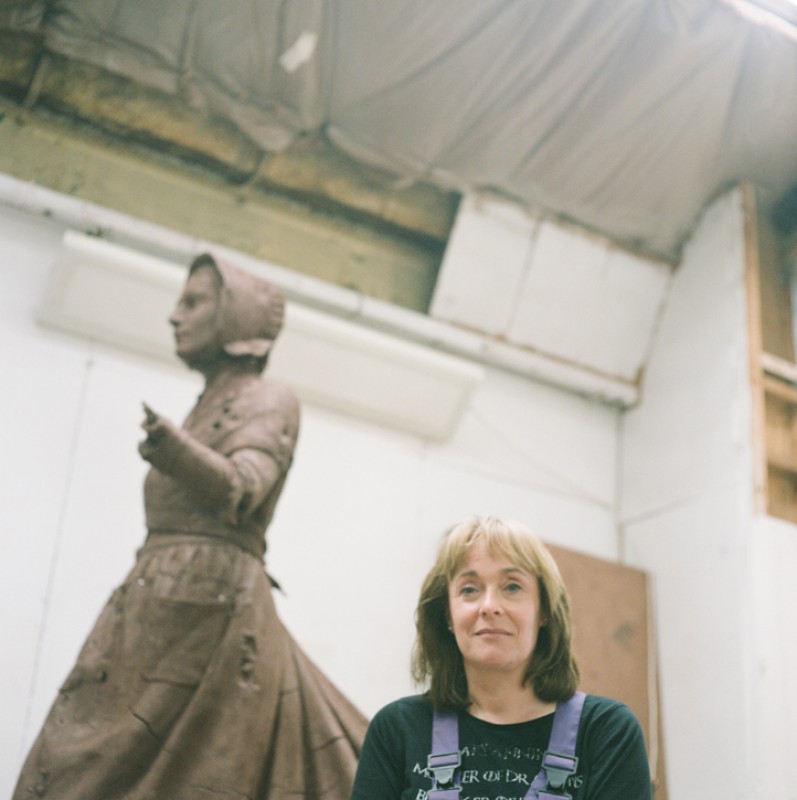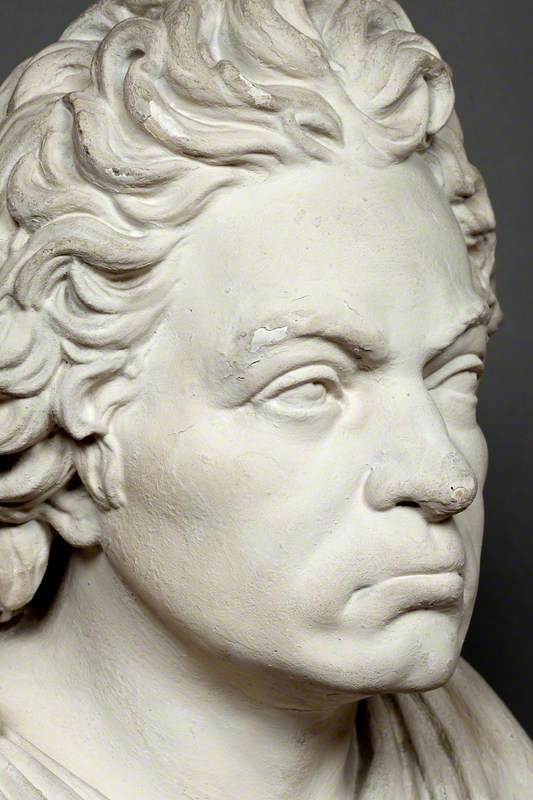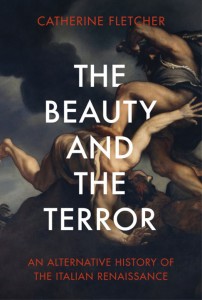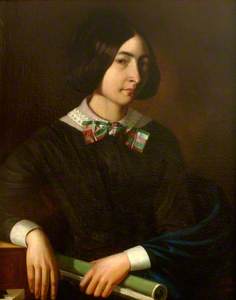'I would venture to guess that Anon, who wrote so many poems without signing them, was often a woman.' – Virginia Woolf
In a patriarchal world hostile to female creativity, women were obliged to pass as men to get the attention of publishers, be taken seriously by their audiences, or to advance their sales – and some women still conceal their sex today.
In time for International Women's Day on 8th March, here is a selection of portraits of female writers in UK collections who used a nom de plume.
Plus, scroll to the bottom to find out which famous historical male figure used several female pen names!
1. Jane Austen
Jane Austen (1775–1817) produced some of Britain's favourite novels such as Pride and Prejudice, Emma, Persuasion and Sense and Sensibility. Austen did not have a male pen name per se, but she did publish all of her novels anonymously, with the front covers of her books simply stating: 'By a Lady'.
This pencil and watercolour work of Austen was completed by her sister Cassandra Austen in around 1810.
To be acknowledged as a female writer in the late eighteenth century did not sit well with societal notions of 'respectability'. Not only was it deemed 'improper', but impractical seeing as women didn't have the legal power to sign contracts. Since
In the latter text, Austen had written: 'A woman, especially, if she has the misfortune of knowing anything, should conceal it as well as she can.'
Although today she is one of the most celebrated novelists of all time, during her own lifetime she only received little personal fame. In 1870, her nephew published Memoir of Jane Austen, which boosted her popularity.
2. George Sand
Amantine Lucile Aurore Dupin, more widely known as the French novelist George Sand, authored countless novels and short stories, becoming a literary icon in nineteenth-century Europe.
At the beginning of her career, Sand co-authored a few stories with the writer Jules Sandeau, under the name 'Jules Sand'. Later, she adopted the male alias of George Sand. Unperturbed by societal expectations, for most of her life she unashamedly wore male clothing and smoked tobacco in public.
Her close friend the Russian writer Ivan Turgenev once described her in the following way: 'What a heart of gold she had! What absence of every petty, mean, or false feeling! What a brave man she was, and what a good woman!'
3., 4. & 5. The Brontë Sisters
Charlotte, Emily and Anne Brontë all became celebrated authors, beginning their careers using the names Currer (Charlotte), Ellis (Emily) and Acton (Anne) Bell. In 1846, they published their first volume of poetry under these names.
The Brontë Sisters (Anne Brontë; Emily Brontë; Charlotte Brontë)
c.1834
Patrick Branwell Brontë (1817–1848) 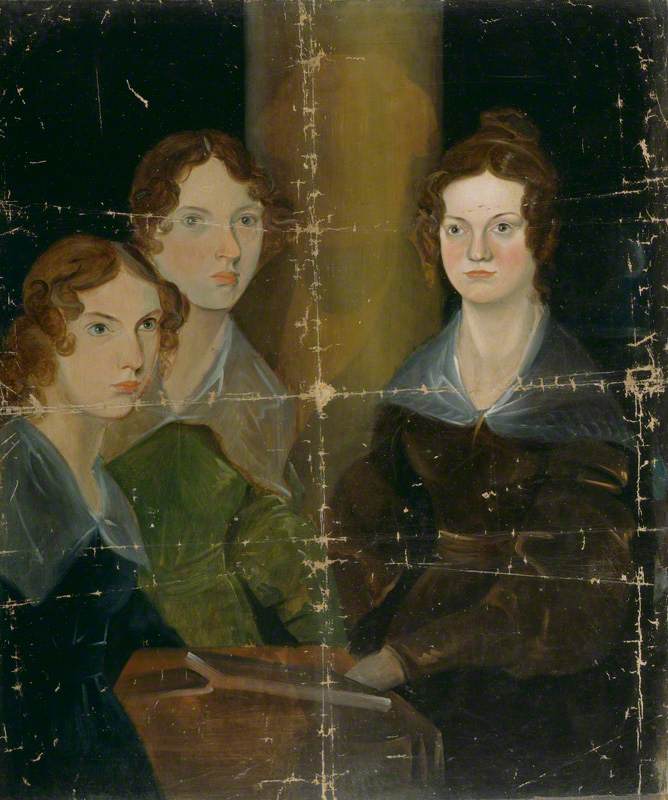
Charlotte Brontë's novel Jane Eyre and Emily Brontë's Wuthering Heights are perhaps today the most famous books. Yet interestingly, Anne's second novel The Tenant of Wildfell Hall – published the same year as Wuthering Heights in 1848 – sold better.
The Brontë sisters knew that female writers wouldn't be taken seriously, and might even be ostracised by society. Upon sending her poetry to the Poet Laureate Robert Southey, Charlotte received a response letter saying 'literature cannot be the business of a woman's life.'
Under the name Currer Bell, the first release of Jane Eyre was met to widespread critical acclaim and reprinted within ten weeks. However, when it was ultimately revealed that the true author was a woman, damning reviews of Jane Eyre began to emerge. Such backlash revealed the very clear double standards in nineteenth-century society. The book was shunned, described as a dangerous, improper and 'anti-Christian' book.
6. Elizabeth Gaskell
Elizabeth Gaskell (1810–1865) was a popular English Victorian novelist and biographer best known for her novels Mary Barton, Cranford and the biography of Charlotte Brontë, The Life of Charlotte Bronte, written in 1857 (Charlotte had died in 1855).
At the start of her career, Gaskell adopted the pseudonym 'Cotton Mather Mills', before choosing to publish under the name 'Mrs Gaskell'. Despite becoming a high-earning and well respected literary figure who was acquainted with figures such as Charles Dickens and Samuel Rogers, under the law she was obliged to give her earnings to her husband, William Gaskell.
7. George Eliot
One of the most famous novelists of the Victorian era – and of all time – was George Eliot, whose real name was Mary Ann Evans. Her most renowned books include The Mill on the Floss (1860), Middlemarch (1871) and Daniel Deronda (1876). Eliot's expertise was psychological realism and her texts offered a refreshing and honest take on provincial life in rural England.
George Eliot (Mary Ann Cross, née Evans)
(replica of an original of 1849 by the artist)
François d' Albert-Durade (1804–1886) 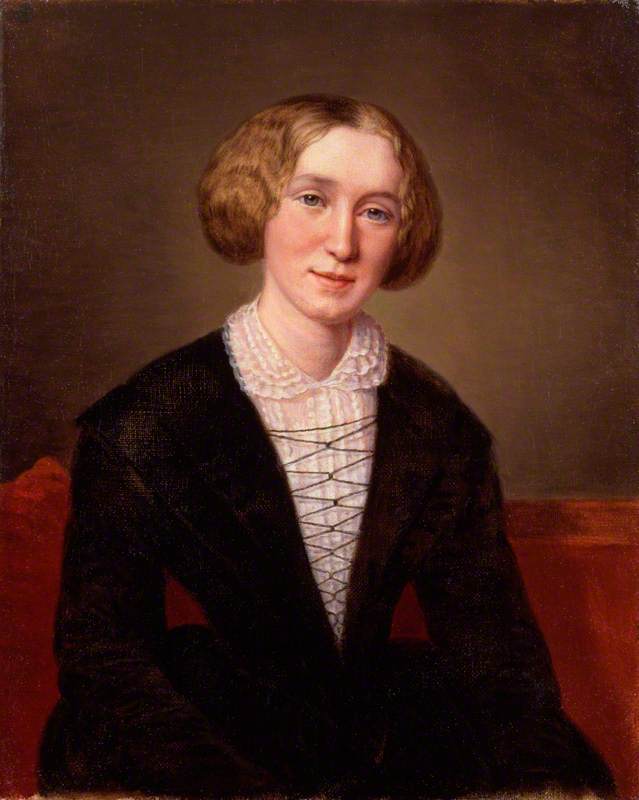
Evans adopted the pseudonym to avoid being stereotyped as a female writer. Experiencing the same obstacles as her predecessors, at the time literature by women was still dismissed as frivolous, sentimental and ultimately domestic.
Evans also concealed her identity because she was living with a married man – the English critic and philosopher George Henry Lewes (whose forename she chose for her nom de plume). Lewes was infamously in an 'open marriage' with his wife Agnes Jervis, though due to legal complications the couple were unable to divorce. Unsurprisingly, this unconventional relationship scandalised prudish Victorian society and Evans was ostracised. However, in 1877 she was invited to meet with the daughter of Queen Victoria, Princess Louise, who was a great fan of her books.
8. Vernon Lee
Vernon Lee was the pseudonym of British writer Violet Paget (1856–1935) who was known for her essays on aesthetics, poetry, philosophy and works of supernatural fiction, a notable example being Hauntings (1890). She lived openly as both a lesbian and feminist throughout her life. This portrait of her is by John Singer Sargent.
For the entirety of her career, she continued to use a male pseudonym so as to be taken more seriously. In total, she wrote over 30 books.
9. Agathe Christie
Agathe Christie has been a household name on the literary scene for nearly a century. Born in 1890 as Agatha Mary Clarissa Miller, she went on to publish over 80 mystery and crime thriller books during her lifetime (66 novels and 15 short story collections), including The Murder of Roger Ackroyd (1926), Murder on the Orient Express (1934), The A. B. C. Murders (1935) and Death on the Nile (1937).
At the start of her career, she used the pseudonym 'Monosyllaba', though publishers declined her work before finally accepting her detective novel The Mysterious Affair at Styles, which was published in 1920. Later in her career, Christie adopted the pseudonym 'Mary Westmacott', publishing six books such as Giant's Bread (1930) and Absent in the Spring (1944).
One of her most memorable, perhaps tongue-in-cheek quotes was: 'The best time to plan a book is while you're doing the dishes.' According to popular myth, she also liked to think up plot ideas while soaking in the bath.
10. J. K. Rowling
Joanne Rowling, famously known by her pen name 'J. K. Rowling', hardly needs a formal introduction. However, if you happen to be living on another planet you should probably know that she wrote the Harry Potter series and is one of the wealthiest writers in existence.
In 1990, grieving over the death of her mother and while sitting on a delayed train from Manchester to London, she came up with the idea of a young boy who attends a school of witchcraft and wizardry. Cut to a decade later, and the literary and cinematic franchise of Harry Potter exploded onto the scene. Today's millennials are still going to sleep at night listening to the voice of Stephen Fry and are dealing with the upsetting reality that they are only mere muggles and will never go to Hogwarts (this sad truth still hurts).
But why did Rowling chose a seemingly gender-neutral pseudonym? Rowling chose her pen name because she anticipated that young boys might not want to read a book by a female writer. Later she would write under the pseudonym 'Robert
This striking and surreal portrait of Rowling was created by artist Pearson Wright in the writer's Scottish home in
...and one man: Benjamin Franklin
Benjamin Franklin was one of America's Founding Fathers – and was also a political theorist, statesman and scientist.
What is perhaps less well known is that he used several pen names, often when he was offering criticism or slander against another politician or person of authority.
For some of his more satirical observations, Franklin used a range of female pseudonyms, including Silence Dogood, Alice Addertongue,
To conclude, I'll leave you with the sad truth that still today, statistics show that audiences maintain a gender bias when it comes to choosing and appreciating works of literature – something which annual events like International Women's Day and Women's History Month can seek to rectify.
Lydia Figes, Content Creator at Art UK
